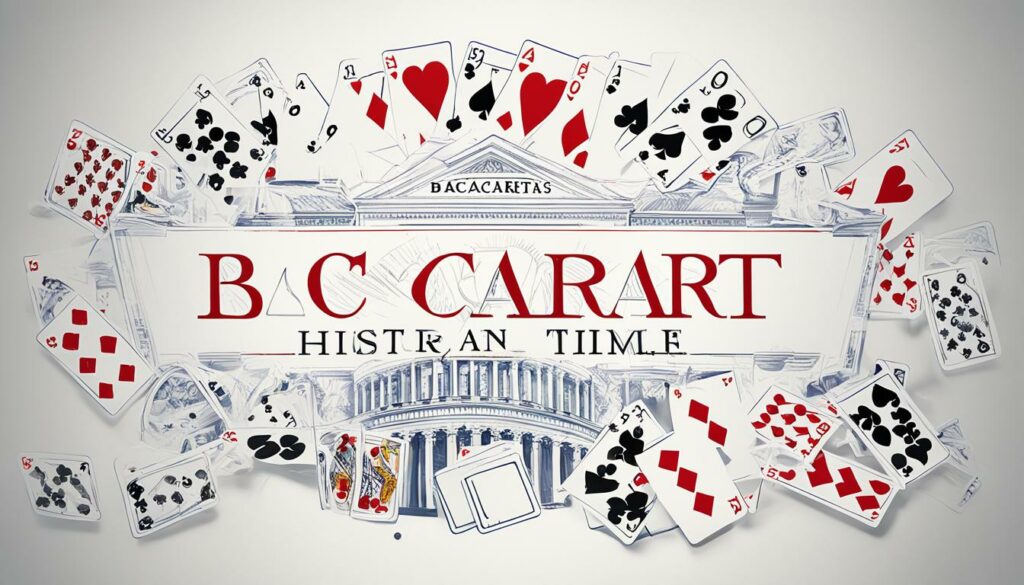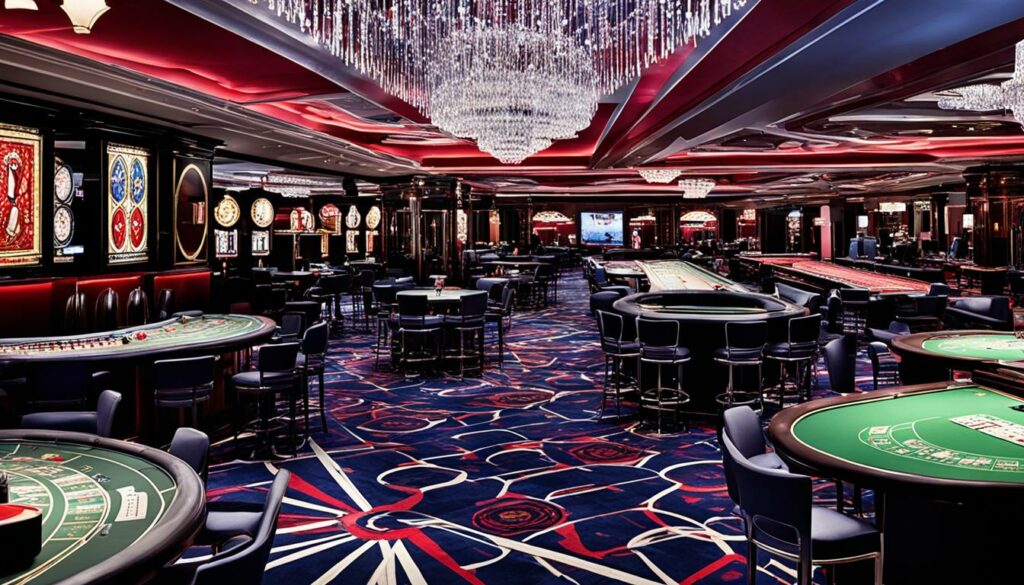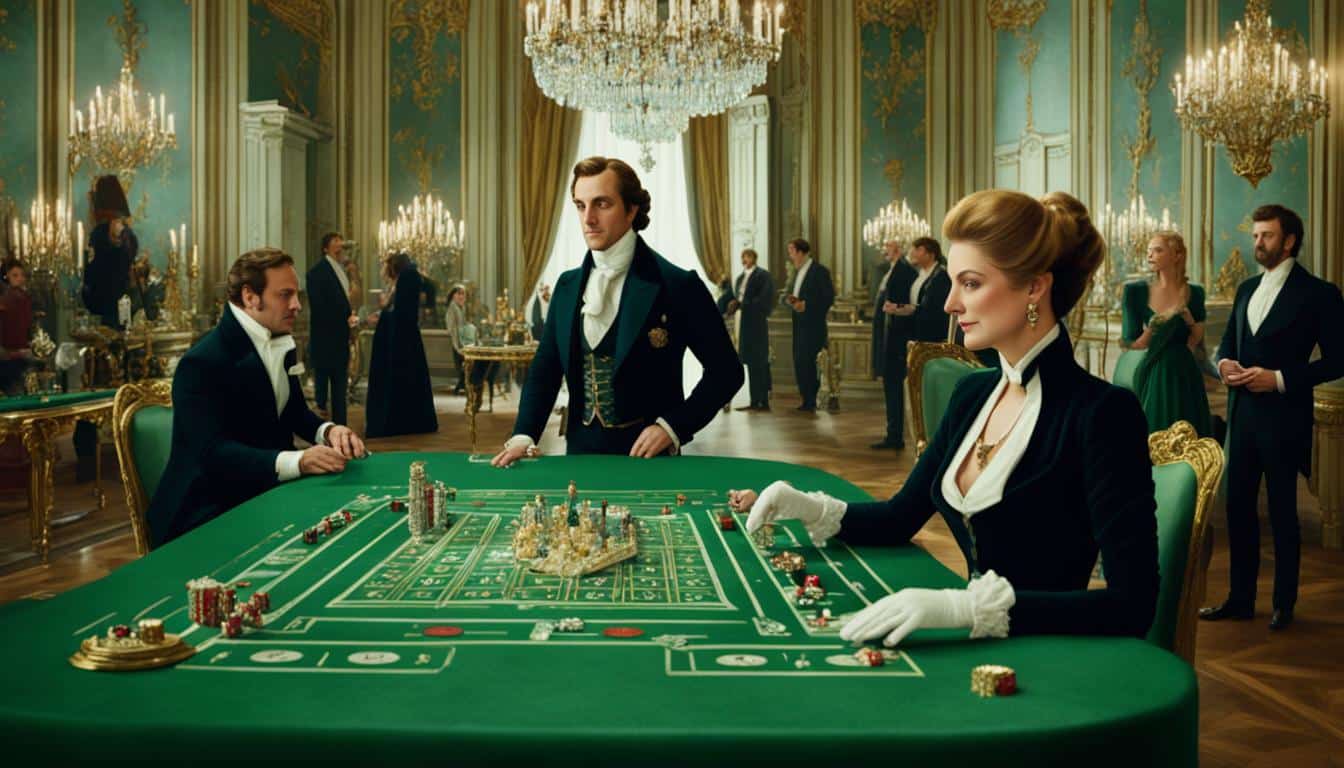In this article, we will delve into the intriguing history of baccarat, exploring its origins and shedding light on the question of when this beloved game was first invented. Baccarat has long captivated the interest of gamblers and enthusiasts around the world, and understanding its history adds an extra layer of fascination to the game. Let’s embark on a journey through time as we uncover the rich and vibrant past of baccarat.
Before we uncover the exact moment of baccarat’s inception, it’s essential to grasp the broader context in which this game emerged. Baccarat originated centuries ago, steeped in the traditions and cultures of the elite.
Stay tuned for the following sections, where we will explore the early history of baccarat, the individuals attributed to its invention, and the game’s evolution and popularity over time. By the end of this article, you’ll have gained a deeper understanding of the history, origin, and significance of baccarat.
The Early History of Baccarat
In the early history of baccarat, we can trace its origins back to ancient civilizations and their love for games of chance. While the exact creation date of baccarat remains a subject of speculation, its roots can be traced to several theories and historical influences.
One theory suggests that baccarat traces its origins to an ancient Etruscan ritual game called “Bona Dea” or “The Great Goddess.” This game involved a nine-sided dice and was played during religious ceremonies to determine the fate of worshippers. Over time, elements of “Bona Dea” evolved into the card game known as baccarat.
Another theory connects baccarat’s creation to the Italian gambler, Felix Falguiere. According to this theory, Falguiere created the game in the Middle Ages using tarot cards. The game was initially called “baccara,” which means zero in Italian, referring to the value of some cards in the game.
“Throughout history, the game of baccarat has undergone various transformations, adapting to the customs and preferences of different cultures.”
During the 15th and 16th centuries, baccarat gained popularity among the French nobility. It was often played in exclusive private gaming rooms, and its rules gradually evolved into what we know as modern baccarat today.
To provide a clearer timeline of baccarat’s development, let’s take a look at the key milestones:
- Approximately in the 14th century, baccarat’s predecessor, “Bona Dea,” was played during Etruscan ceremonies.
- In the Middle Ages, Felix Falguiere is believed to have created the early form of baccarat using tarot cards.
- During the 15th and 16th centuries, baccarat gained popularity among the French nobility.
- In the 19th century, baccarat made its way to South America and the United States, where it captured the interest of high society.
- In the 20th century, baccarat continued to flourish globally, reaching new heights of popularity in Asian markets.
As the centuries passed, the game of baccarat went through various transformations, adapting to the customs and preferences of different cultures. Its enduring appeal and rich history continue to captivate players worldwide.
Who Invented Baccarat?
Throughout the history of baccarat, several individuals and cultures have been associated with the invention and development of this intriguing game. Let’s take a closer look at some of the prominent figures and historical milestones that shaped the evolution of baccarat over time.
16th Century Italy: Felix Falguiere
The origins of baccarat can be traced back to 16th century Italy, where a legendary gambler named Felix Falguiere is believed to have created the precursor to the modern game. Falguiere’s version of baccarat was initially called “Baccara” and was played using Tarot cards. The game quickly gained popularity among the Italian nobility and spread throughout Europe.
19th Century France: Chemin de Fer
In the 19th century, baccarat underwent further refinement and popularity in France, particularly with the variant known as Chemin de Fer. This version of the game became a favorite of the French nobility and high society, captivating players with its elegance and strategic gameplay.
20th Century America: Tommy Renzoni
In the 1950s, baccarat made its way across the Atlantic to the United States, thanks to the efforts of Tommy Renzoni. Renzoni, a professional gambler and writer, introduced the game to the glamorous casinos of Las Vegas. It quickly caught on among high rollers and became a staple in the American gambling scene.
Contemporary Influence: Asian Market
In recent years, the popularity of baccarat has surged even further, thanks in large part to the influence of the Asian market. High-stakes baccarat is particularly popular in Macau, where it is favored by wealthy gamblers from around the world.
These are just a few examples of the individuals and cultures that have played a significant role in the invention and development of baccarat. The game’s rich history and international appeal only serve to enhance its allure and enduring popularity.

Baccarat’s Evolution and Popularity
Throughout history, baccarat has experienced a remarkable evolution and gained immense popularity in various regions and among different social classes. Let’s explore the significant milestones and factors that contributed to the enduring appeal of this captivating game.
Spread Across Regions and Social Classes
Baccarat originated in Europe, particularly in France, and quickly spread across the continent during the 19th century. The game’s simplicity and elegance appealed to both the aristocracy and the common people, making it accessible to a wide range of players.
As baccarat continued to gain traction, it reached beyond Europe’s borders, making its way to North and South America, Asia, and other parts of the world. The game’s universal appeal transcended cultural boundaries, captivating players across different societies and backgrounds.
Significant Milestones
Over time, baccarat experienced several significant milestones that shaped its evolution and popularity:
- Early Adaptations: The early adaptations of baccarat, such as Chemin de Fer and Baccarat Banque, played a crucial role in refining the rules and gameplay mechanics. These variations added depth and complexity to the game, attracting a wider audience.
- Casino Domination: Baccarat’s popularity soared as it became a staple in casinos worldwide. The game found its home in exclusive VIP rooms, further enhancing its allure and reinforcing its association with high stakes and luxury.
- Pop Culture Influence: Baccarat’s depiction in popular culture, including movies like James Bond franchise, elevated its status as an iconic casino game. The portrayal of glamorous settings and sophisticated players added to the game’s mystique and allure.
- Online Gambling Boom: With the advent of online casinos, baccarat’s popularity reached new heights. The convenience of playing from anywhere, coupled with various online baccarat variations and live dealer options, made the game accessible to a global audience.
The Enduring Appeal
Baccarat’s enduring appeal can be attributed to its unique blend of simplicity, elegance, and strategic gameplay. The game’s straightforward rules make it easy to learn, while its inherent depth provides ample opportunities for skilled players to employ winning strategies and tactics.
Furthermore, baccarat’s association with high stakes, sophistication, and exclusivity continues to attract players seeking an elevated gambling experience. The game’s presence in prestigious casinos and its representation in popular culture further fuel its allure and timeless charm.

As baccarat continues to evolve and adapt to new gaming trends and technologies, its rich history and enduring appeal cement its well-deserved place as one of the most beloved casino games around the world.
| Milestone | Description |
|---|---|
| Early Adaptations | Refined rules and gameplay mechanics with variations like Chemin de Fer and Baccarat Banque. |
| Casino Domination | Became a staple in casinos, finding a place in exclusive VIP rooms. |
| Pop Culture Influence | Elevated status through depictions in movies like the James Bond franchise. |
| Online Gambling Boom | Reached new heights of popularity with the advent of online casinos. |
Conclusion
Through our comprehensive exploration of the origins of baccarat, we have uncovered fascinating insights into the game’s history. While the exact date of its invention remains a subject of debate, it is widely believed to have emerged in the 14th century. Baccarat’s origin can be traced back to Europe, where it quickly gained popularity among the nobility and aristocracy.
Understanding the history of baccarat is crucial for appreciating its enduring appeal in the world of gambling and entertainment. From its humble beginnings to its evolution across different regions and social classes, baccarat has captivated players for centuries. Its strategic gameplay, elegant atmosphere, and association with high stakes have contributed to its reputation as a prestigious casino game.
Moreover, the game’s timeline reflects the shifts in cultural preferences and societal dynamics throughout history. Baccarat’s journey from exclusive gaming tables to online platforms exemplifies its ability to adapt and cater to changing audiences.
In conclusion, when we delve into the history of baccarat, we unlock a captivating narrative that spans centuries. By learning about its creation, evolution, and notable figures involved, we gain a deeper appreciation for the game’s enduring allure and ongoing impact in the world of gaming and entertainment.
FAQ
When was baccarat invented?
Baccarat is believed to have been invented in the 15th century in Italy. Its exact creation date is uncertain, but it is thought to have emerged during the reign of King Charles VIII in the late 1400s.
What is the history of baccarat?
Baccarat has a rich history that spans several centuries. It was initially popular among the French nobility and later gained popularity across Europe. In the 19th century, it made its way to the Americas and became a favorite among casino enthusiasts. Today, baccarat is a globally recognized game enjoyed by players worldwide.
What are the origins of baccarat?
Baccarat’s precise origins are unclear, but it is widely believed to have evolved from various medieval European card games. The game’s name is derived from the Italian word “baccara,” which means zero, referencing the value of face cards and tens in the game.
Who invented baccarat?
While the exact inventor of baccarat remains unknown, the game is often associated with the French. It gained popularity during the reign of King Louis XIV and became a favorite pastime among the French aristocracy. Over time, baccarat spread to other parts of the world, with different regions adding their own variations to the game.
How has baccarat evolved over time?
Baccarat has evolved significantly throughout its history. Initially, it was played only by the elite in private gaming rooms. However, it gradually became more accessible to the general public and is now played in both land-based casinos and online platforms. The rules and variations of the game have also evolved, catering to different player preferences.













